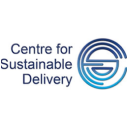Treatment of menstrual migraine starts by optimising acute treatment, bearing in mind that menstrual migraine tends to be more severe, prolonged and refractory.
When acute treatment is not effective, then one may consider different prophylactic approaches.
Standard prophylactic medication can be used in menstrually related migraine when there are other migraine attacks during the cycle; but it may not be effective for pure menstrual migraine, when targeted prophylactic approach is likely to be more adequate.
Targeted perimenstrual prophylaxis can only be used when menstruation is regular and predictable because the prophylaxis has to be started before the onset of the menstrual attack5.
Examples include:
- Frovatriptan on day -2 at 5mg twice a day followed by 2.5mg twice a day for 5 days
- Naproxen 500mg daily from day -14 to day + 7 or shorter courses from day -1 to day +7
- Estradiol gel 1.5mg daily from day -5 for 7 days.
Another approach would be to supress menstruation
A) by supressing all ovarian activity: Examples include:
- Continous combined hormonal contraceptive (Ethinylestradiol). This also treats menopausal symptoms and healthy women can take it up until age 50. It is contraindicated in migraine with aura.
- Injectable progestin-only contraceptives (Medroxyprogesterone acetate)
- Oral progestin-only contraceptives (Desogestrel 75mg)
B) by supressing prostaglanding release (reducing menstrual bleeding) with progestin-releasing intrauterine device. Oestrogen withdrawal still occurs with this option.


 Scan the code to visit our website
Scan the code to visit our website